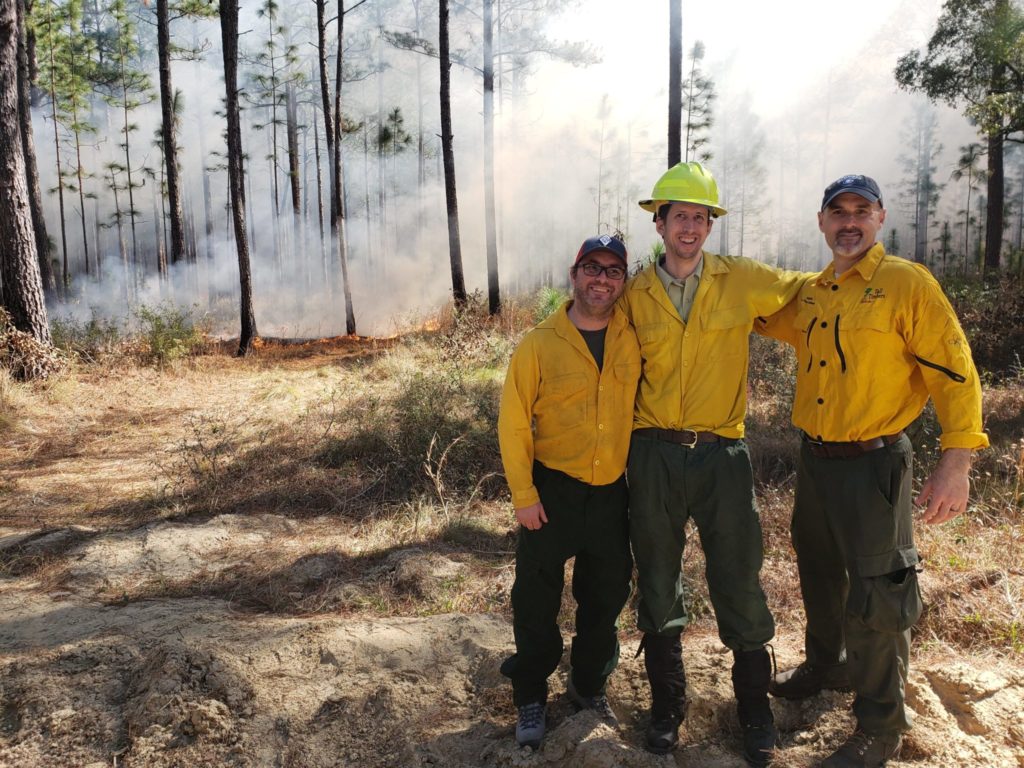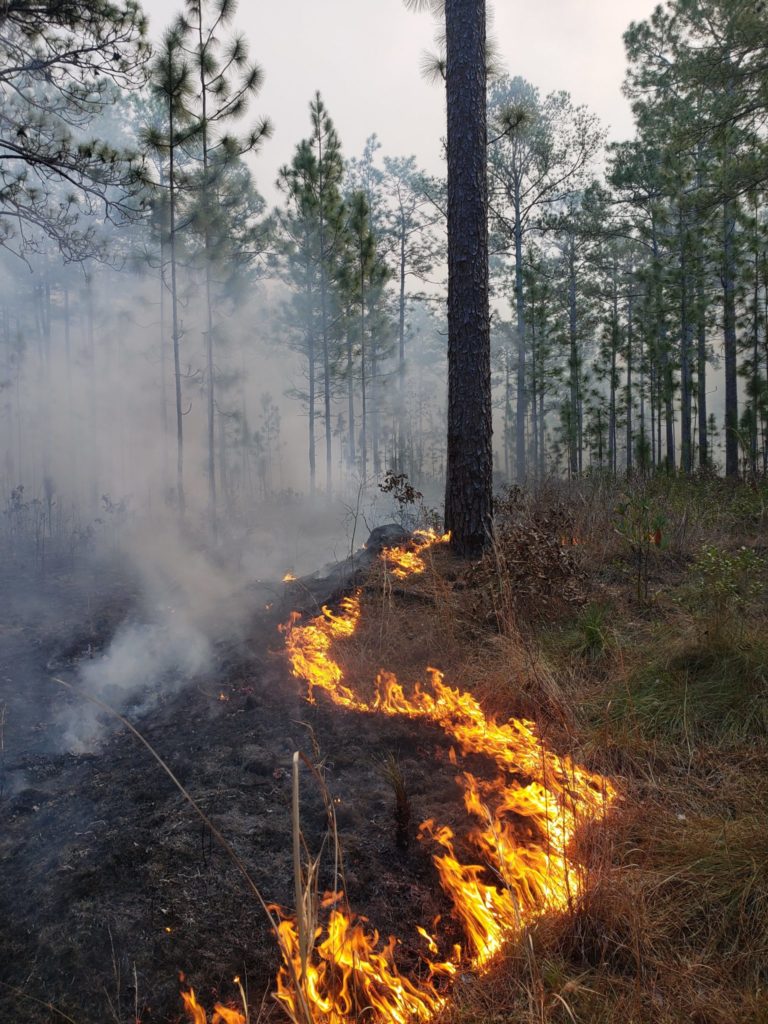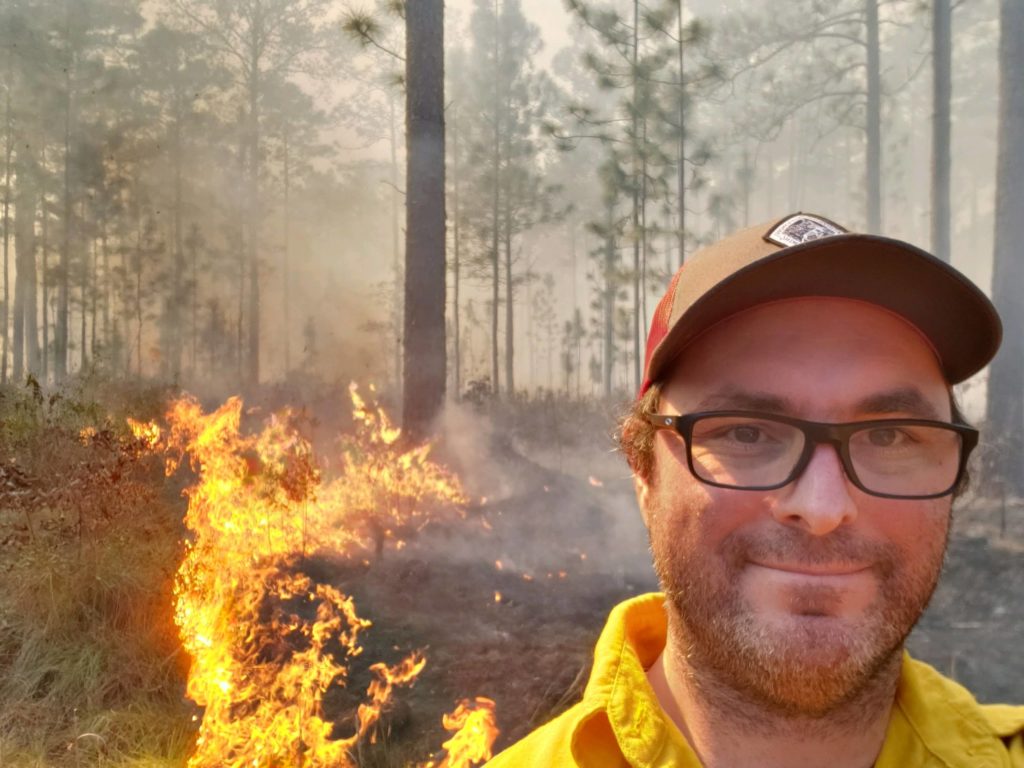
The risk of severe wildfires is intensifying as the effects of global climate change continue to increase. Colorado State University researcher Chad Hoffman is among many researchers who provide scientists and land managers scientific support for the safe and effective use of prescribed fire, a common management tool used to reduce the negative impacts of wildfire and meet ecological objectives.
 Prescribed fires mitigate the spread of wildfires across the United States by clearing away potential fuels. They are also used to enhance wildlife habitat, control invasive plant species, and restore native plant communities.
Prescribed fires mitigate the spread of wildfires across the United States by clearing away potential fuels. They are also used to enhance wildlife habitat, control invasive plant species, and restore native plant communities.
To further the knowledge of prescribed fires, Hoffman and a group of researchers spanning fire science fields are conducting more than 30 experimental prescribed burns across the southeastern United States with funding from the U.S. Department of Defense’s Strategic Environmental Research and Development Program’s Wildland Fire Science Initiative. Research burns at Fort Stewart, Georgia, which involve nearly 50 fire scientists from around the country, will add to the science that informs land managers and their burns. In total, collaborative burns over 2,890 acres will be conducted.*
Their research topics included fuel and meteorological measurements, smoke plume, fire behavior, fire effects, and fire behavior model testing and evaluation.
Hoffman, an associate professor in the Department of Forest and Rangeland Stewardship, says this level of collaboration is uncommon. The collaboration gives researchers more ability to collect highly detailed data in one place, which allows them to access the complex interactions and mechanisms driving fire behavior and effects.
Hoffman’s part in the project involves a five-year $2.8 million grant from the Department of Defense and focuses on linking forest structure, fire behavior, and fire effects.
As a fire modeler, Hoffman creates virtual burns that show managers how fire acts in different scenarios. He uses field measurements and data to predict fire behavior and effects in order to conduct burns safely and achieve their intended purposes.

“We can’t do prescribed fires across every single type of condition ever,” Hoffman says. “So, to supplement what we measure in the field, our modeling team and our measurements team work together.”
Hoffman is interested in improving models for predicting prescribed fire effects and simplifying disparate models that have been developed independently of one another, and then getting those improved models into the hands of managers.
Hoffman says he hopes that the type of translational research involving scientists, stakeholders, and decision-makers they are conducting in the southeast will ultimately be transferred to places in the western United States to help address the unique science needs related to prescribed fire in states like Colorado.
*Researchers present included representatives from the U.S. Forest Service (USFS), U.S. Geological Survey (USGS), Tall Timbers Research Station, Joint Fire Science Program (JFSP), Georgia Tech, San Jose’ State, University of Washington, Colorado State University and Los Alamos National Laboratory.